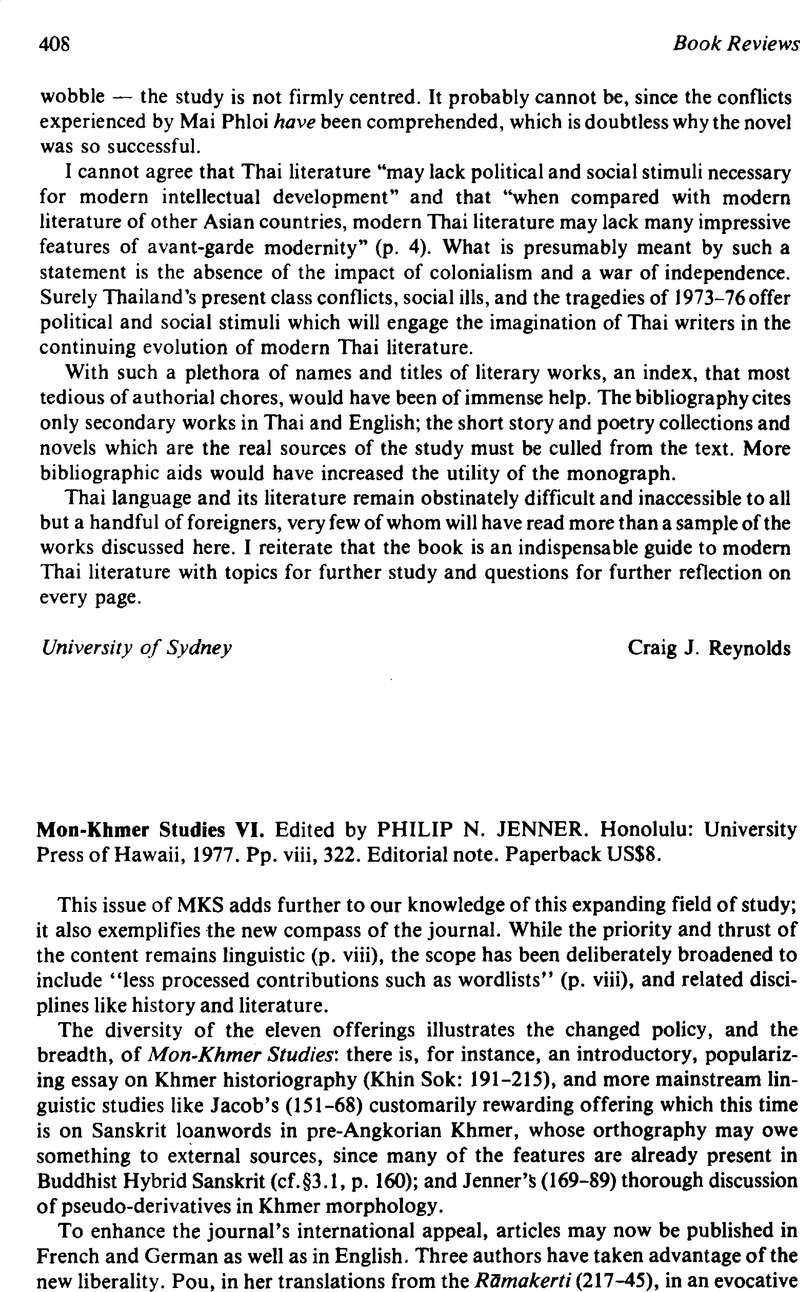No CrossRef data available.
Published online by Cambridge University Press: 24 August 2009

1. Vaudeville, Charlotte, Le Ramayan de Tutsi Das, Texte hindi traduit et commenté, Paris, “Les Belles Lettres”, 1977, pp. iv, 211Google Scholar, Collection “Le Monde Indien”.
2 Pou, S. & Jenner, P.N., “Some Chinese Loanwords in Khmer”, Journal of Oriental Studies 11, no. 1 (1973): 1–90Google Scholar.
3. The male and female indicators ?u and ka (p. 247) apparently developed from identical masculine and feminine third-person pronominal affixes. See Simon, I.M., “The Verbal Pieces in Khasi” (M. Phil., diss., London University, 1974), pp. 20–24Google Scholar. Perhaps some gender classifications may be dictated by vowel quality, a phonaesthetic distinction? See Simon, op. cit., p. 100, on people of different sizes: sbak, sbek, sbik, etc.